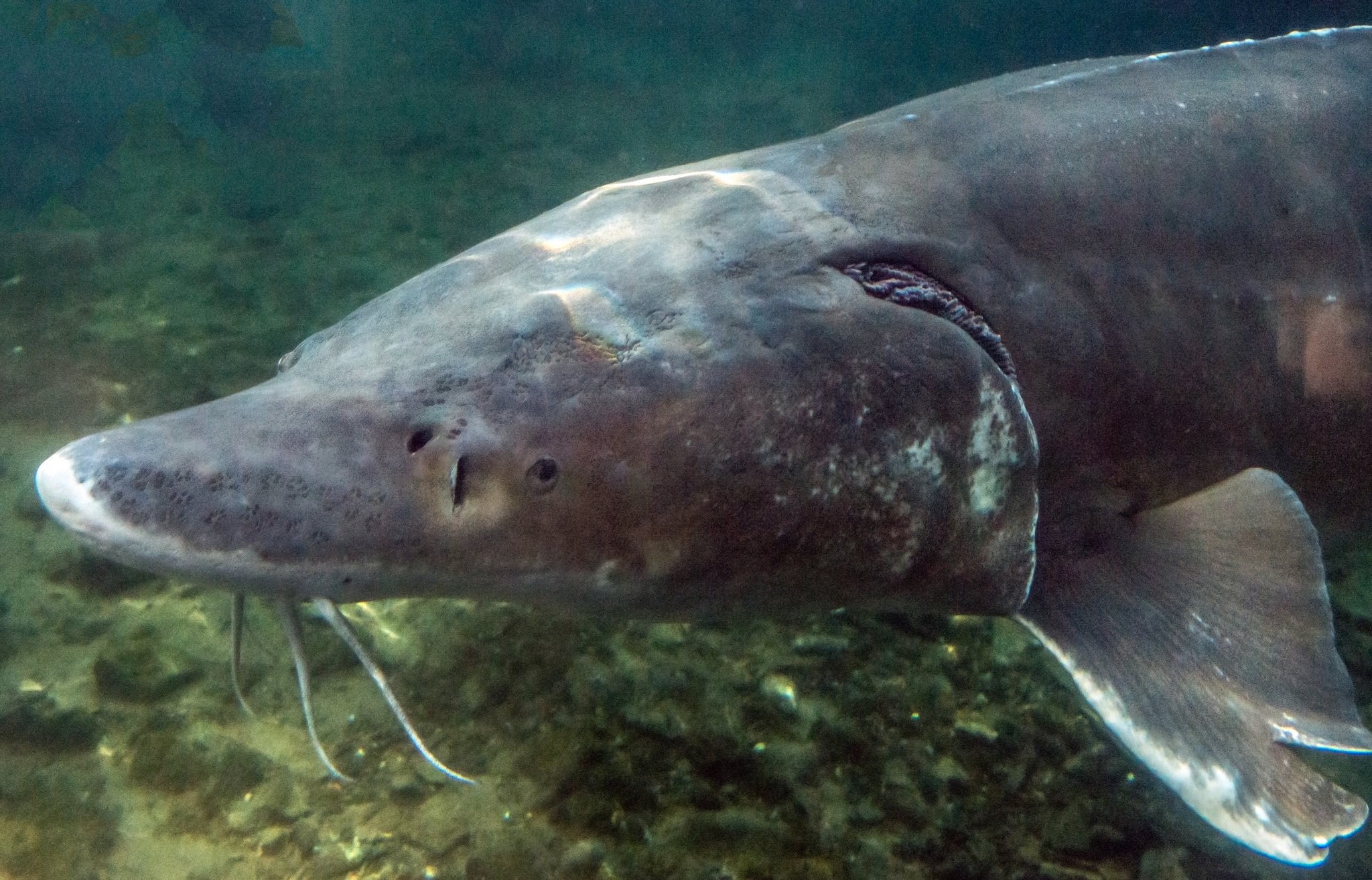White Sturgeon Populations Are Stable But Face Threats In The Columbia
- October 16, 2015
- John Harrison

While white sturgeon populations in the Columbia River downstream of Bonneville Dam are stable, they're also targeted by the growing sea lion population and their spawning can be affected by dam operations upstream.
In a presentation at the Council's October meeting, Tucker Jones of the Oregon Department of Fish and Wildlife, said the total population is probably around several hundred thousand fish, and the number of harvestable-size fish is on the increase. Until 2015, predation on sturgeon by sea lions was increasing annually, but this year there was a reduction. Even so, sea lions are believed to kill more than 10,000 sturgeon annually downstream of Bonneville Dam.
Hydropower dam operations also affect sturgeon. Adult fish can swim into turbines when they're not being used and trapped and killed when they start up. Slower turbine start-up helps reduce that problem, essentially chasing the fish back into the river. Dam operations can also affect spawning. When females release their eggs into the river, some adhere along the shore and are exposed when river levels drop from reservoir operations upriver. “Power peaking and load following fluctuations of a couple feet or more cause repeated wetting and drying of the eggs, and that can affect their survival,” Jones said.
The white sturgeon population between Bonneville and The Dalles dams is also healthy–at least 150,000 fish–but there are fewer mature, spawning-age adult fish than downriver. “Fish don’t grow well there,” Jones said. Sturgeon populations above The Dalles and John Day dams are relatively healthy, but spawning success is low and there are few juvenile fish, he said.
White sturgeon are legally harvested between Bonneville and McNary dams–about two-thirds allocated to tribal fishers–but illegal harvest is a problem, as sturgeon eggs–caviar–are valuable. In response to Council member questions, Jones said illegal harvest is a law enforcement issue and the number of illegally harvested sturgeon is not known. “We still see adult populations increasing, and we take mortality into consideration,” he said. “Some of the mortality we see is from poaching, some is from vessel strikes, some is from dams. We don’t know where it’s all coming from but we know it’s occurring.”
Low flows and high water temperatures in the Columbia were also responsible for sturgeon mortality this year. Jones said 169 dead sturgeon were counted, most of them in the reservoir between The Dalles and John Day dams, but the total number of dead fish was probably higher since dead fish were found along shorelines as well.
More information about Columbia River sturgeon is on the Council’s white sturgeon dashboard.


